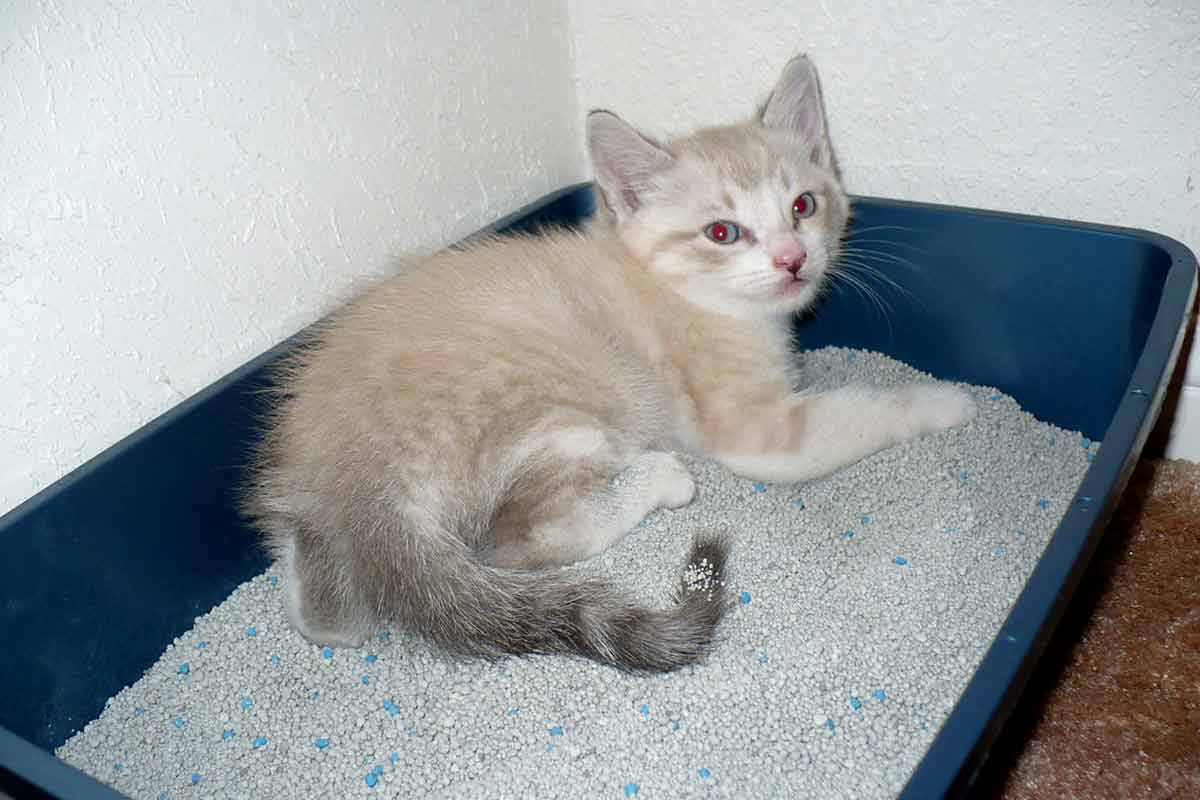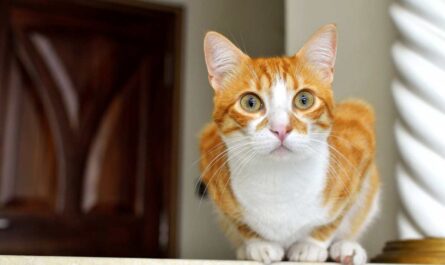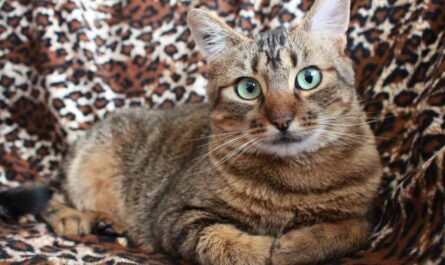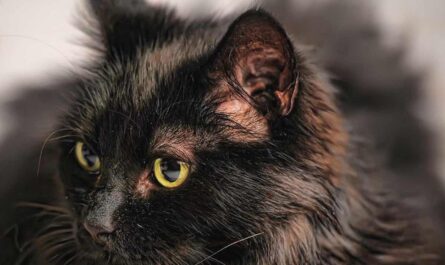How to feed a newborn kitten that won’t eat? Feeding a newborn kitten that refuses to eat can be a challenging but crucial task for their survival. Confronting the reluctant eater syndrome in a newborn kitten poses not just a challenge but a pivotal juncture between survival and peril. Convincing a tiny, fragile creature to partake in the sustenance critical for its existence requires finesse, patience, and an intimate understanding of the intricate dance of feline instincts.
Unraveling the Root Causes
Delving into the layers of this challenge demands an exploration of the potential root causes behind the kitten’s reluctance. A myriad of factors may contribute, ranging from underlying health issues to environmental stressors. An astute observer may discern clues in the kitten’s behavior, unraveling the tapestry of its well-being and perhaps pinpointing the elusive reasons behind its hesitance to embrace nourishment.
Tailoring a Persuasive Culinary Symphony
Addressing a reluctant eater necessitates more than just presenting a bowl of formula. It requires the crafting of a persuasive culinary symphony, where the texture, temperature, and even the ambiance play crucial roles. Experimentation becomes a key ally as one navigates through an array of formulas, warming techniques, and feeding methodologies, all in a bid to discover the elusive combination that ignites the kitten’s appetite.
Seeking Professional Guidance
When faced with a feline gourmet who stubbornly refuses sustenance, seeking the wisdom of a veterinary maestro becomes imperative. Their nuanced understanding of feline physiology and behavior can unravel the enigma, providing tailored strategies to coax the reluctant eater back to the banquet of life. This collaborative effort, where caregiver and veterinarian dance in tandem, becomes the lifeline for the kitten teetering on the edge of nutritional deficiency.
A Test of Resilience and Compassion
In the realm of fostering a reluctant eater, the journey is not merely about calories consumed but a test of resilience and compassion. It demands a delicate balance between persistence and empathy, recognizing that the road to nourishment may be winding and fraught with setbacks. Each small victory, every morsel triumphantly consumed, becomes a testament to the caregiver’s dedication and the kitten’s tenacity in the face of adversity.
How to Feed A Newborn Kitten That Won’t Eat?
Firstly, ensure the kitten is warm, as coldness can deter their appetite. Choose a high-quality kitten milk replacer and warm it to body temperature, approximately 100°F (37.8°C). Use a specialized nursing bottle with a small nipple to mimic the mother’s teat. Hold the kitten in a natural, belly-down position to prevent aspiration. Gently stimulate the kitten’s appetite by touching its lips with the nipple, allowing it to latch onto the bottle. Be patient, as some kittens may take time to adjust.
If the kitten still won’t eat, try different nipples or feeding methods. Consult a veterinarian promptly for professional guidance, as underlying health issues or specific dietary requirements may need attention. Additionally, consider a vet-approved feeding schedule and monitor the kitten’s weight gain to ensure proper development. This article will give an overview of how to feed a newborn kitten that won’t eat. Keep reading.
What is the appropriate diet for a motherless newborn kitten?
Crafting an appropriate diet for a motherless newborn kitten demands a meticulous approach. The linchpin of this dietary strategy is a specially formulated kitten milk replacer, a bespoke concoction procurable at pet supply establishments. This surrogate sustenance is not merely a substitute; it stands as a carefully crafted mimicry of a mother cat’s milk composition, providing the essential nutrients crucial for the kitten’s flourishing. It’s a salient reminder that regular cow’s milk is an unsuitable surrogate, lacking vital elements and posing the peril of nutritional deficiencies.
How to feed a newborn kitten with a bottle?
Feeding a newborn kitten with a bottle is a delicate art that demands finesse and patience. The first step is acquiring a specialized kitten nursing bottle, equipped with a small, soft nipple to mimic the mother’s teat. Sterilize the bottle thoroughly to create a hygienic environment for the vulnerable kitten.
Preparation of Formula: Prepare a suitable kitten milk replacer, adhering to the manufacturer’s guidelines for the correct ratio. Ensure the formula is at a comfortably warm temperature, mirroring the natural warmth of the mother’s milk, creating a nurturing experience for the kitten during feeding.
Positioning and Comfort: Create a serene and quiet space for the feeding ritual. Hold the kitten securely, cradling it in a slightly upright position. Gently introduce the bottle, allowing the kitten to latch onto the nipple naturally. Patience is key; allow the kitten to set the pace, ensuring a stress-free feeding experience.
Feeding Frequency: Understanding the feeding frequency is crucial. Newborn kittens typically require feeding every two to three hours, emulating the frequency they would nurse from their mother. As the kitten matures, the intervals between feedings can gradually extend.
How to feed a newborn kitten with a syringe?
Syringe feeding a newborn kitten demands precision and the right tools. Opt for a small, sterile syringe with no needle attached. The syringe’s size should align with the kitten’s small mouth, allowing for controlled and measured dispensing of the formula.
Formula Preparation and Warming: Prepare the kitten milk replacer as directed, ensuring a smooth and lump-free consistency. Warm the formula to body temperature, enhancing palatability and easing the digestion process for the tiny recipient.
Syringe Technique: Position the kitten comfortably and securely, holding it gently. With utmost care, introduce the syringe to the corner of the kitten’s mouth. Dispense the formula slowly, allowing the kitten to swallow at its own pace. This method provides meticulous control over the amount ingested, crucial for the well-being of the fragile kitten.
Monitoring and Adjusting: Vigilance is key in syringe feeding. Monitor the kitten’s response and adjust the feeding pace accordingly. A gradual, unhurried approach ensures the kitten’s comfort and minimizes the risk of aspiration.
How to feed a newborn kitten with a dropper?
Feeding a newborn kitten with a dropper is a gentler alternative, offering precise control over the intake. Opt for a small, soft-tipped dropper that can accommodate the diminutive size of the kitten’s mouth.
Formula Consistency and Temperature: Maintain the meticulous preparation of the kitten milk replacer, ensuring a smooth consistency. Warm the formula gently to body temperature, cultivating a nurturing experience akin to natural nursing.
Dropper Feeding Technique: Position the kitten comfortably, cradling it securely in your hands. With the dropper filled with the warmed formula, gently introduce it to the corner of the kitten’s mouth. Release the formula in slow, controlled droplets, allowing the kitten to swallow at its own pace. This method offers a gentle and nurturing feeding experience, minimizing stress for the tiny feline.
Adapting to the Kitten’s Needs: Observe the kitten’s cues and adapt the feeding pace accordingly. The dropper method provides flexibility, allowing for adjustments based on the individual needs and comfort of the newborn. Regular monitoring ensures a harmonious feeding routine, fostering the optimal growth and well-being of the precious kitten.
What is the proper technique for hand-feeding a newborn kitten?
Hand-feeding a newborn kitten metamorphoses into a nuanced dance, requiring finesse and a curated technique. The implements of this art include a small syringe or a specialized kitten nursing bottle, each serving as a conduit for sustaining the fragile life in your care. The choreography involves holding the kitten in a slightly upright position, affording it the agency to suckle at its rhythm. Patience and gentleness, akin to a delicate waltz, become paramount to circumvent the perils of aspiration or choking. This orchestrated approach mimics the natural nursing process, a symphony of nurturing gestures to ensure the newborn’s satiety and well-being.
What is the maximum duration that a newborn kitten can go without consuming food?
The temporal ebb and flow of feeding sessions for newborn kittens is a crucial facet of their care. The ticking clock becomes a companion, heralding the need for sustenance every 2-4 hours, including the nocturnal hours. Venturing beyond this temporal threshold, pushing the boundaries to more than four hours, unveils a perilous terrain. In this temporal vacuum, dehydration and malnourishment emerge as ominous shadows, threatening the well-being of the fragile feline. Hence, consistent and timely feeding emerges not just as a routine but a lifeline, shaping the trajectory of the kitten’s nascent existence.
How much food is recommended for a newborn kitten during each feeding?
The crucial task of nourishing a newborn kitten demands precision and care. The recommended amount of sustenance for these delicate creatures hovers between 8 to 12 milliliters per ounce of their fledgling body weight. However, the nuances of this recommendation aren’t a one-size-fits-all scenario, and hence, seeking the counsel of a seasoned veterinarian is paramount. Their expertise can unravel the unique dietary tapestry of each kitten, tailoring feeding guidelines to the minutiae of the individual’s needs, and ensuring a nourishing start to life.
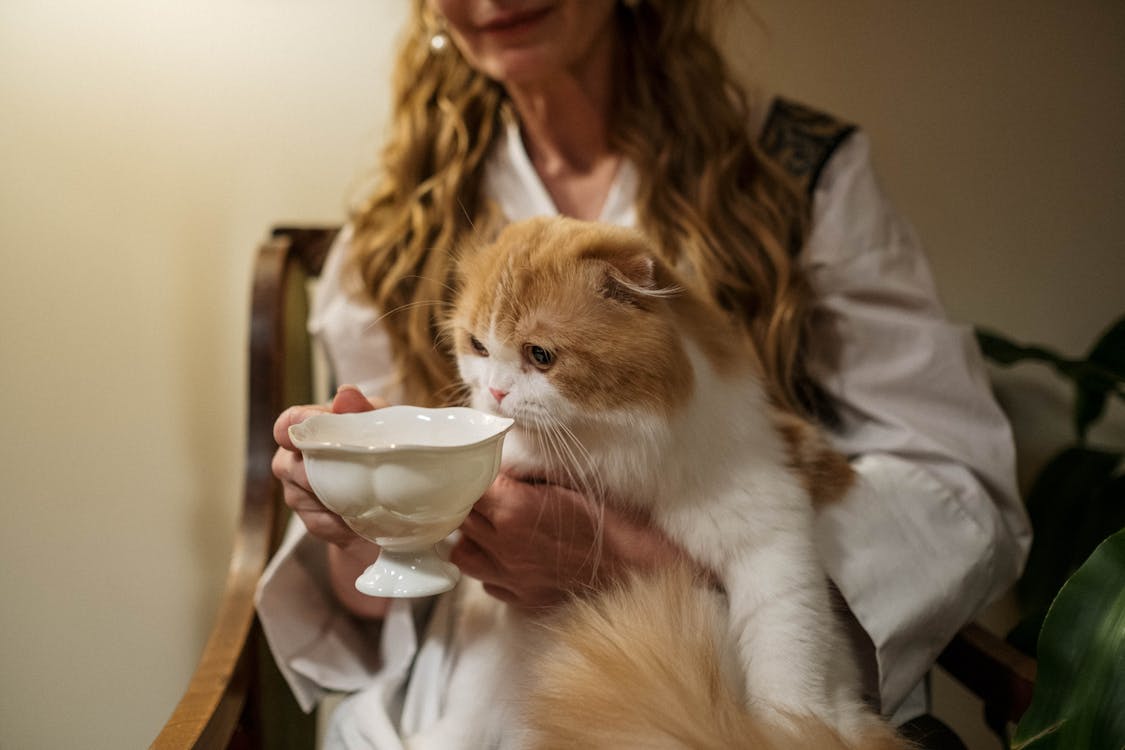
How to feed a newborn kitten without a mother?
In the absence of a mother, the responsibility of nourishing a newborn kitten falls squarely on the caregiver’s shoulders. This intricate task involves mimicking the nurturing environment a mother cat would provide. Begin by securing a suitable milk replacer designed explicitly for kittens, ensuring it is warmed to a gentle temperature resembling that of a feline mother’s milk. Employing a specialized nursing bottle, gently coax the kitten into a feeding routine, simulating the comforting act of suckling. Patience and tenderness are the keystones of this surrogate mothering, as the caregiver assumes the vital role of both nurturer and protector.
How to feed a newborn kitten without a syringe?
When the traditional tool of choice, the syringe, is not at hand, resourcefulness becomes the ally in ensuring a newborn kitten’s sustenance. Instead of a syringe, consider employing a specialized nursing bottle fitted with a small, soft nipple. This alternative not only provides a conduit for delivering the essential milk replacer but also emulates the tactile experience of nursing, promoting a sense of comfort and security for the tiny feline. It is crucial to maintain a measured and gentle approach, adapting to the kitten’s pace and ensuring each feeding session is a harmonious blend of nourishment and reassurance.
How to feed a newborn kitten without a bottle or syringe?
In the absence of both a bottle and a syringe, creativity becomes the linchpin in ensuring a motherless kitten’s nutritional needs are met. A soft, clean cloth can be fashioned into a makeshift pouch, cradling the kitten securely. With the aid of a small dropper or a clean fingertip, carefully dispense the milk replacer, allowing the kitten to lap up the nourishment at its own pace. This improvised approach demands a delicate touch and unwavering patience, as the caregiver becomes the architect of a bespoke feeding strategy, ensuring the fragile feline not only survives but thrives against the odds.
What are suitable food options for a 2-day-old kitten?
Navigating the nutritional labyrinth for a 2-day-old kitten requires a discerning touch. The bedrock of their sustenance at this tender age is a commercial kitten milk replacer. Ensuring this liquid lifeline is gently warmed to approximate the comforting temperature of their mother’s milk becomes an art. This meticulous attention to detail ensures not just sustenance but also replicates the nurturing environment these newborns would find in their mother’s care. As the kitten matures, the guidance of a veterinarian becomes indispensable, orchestrating a seamless transition from liquid nourishment to the more complex realm of solid kitten food.
Is it possible for a newborn kitten to thrive without milk?
Delving into the question of whether a newborn kitten can flourish sans mother’s milk unravels a stark reality. Attempting such a feat is akin to robbing the budding feline of the foundational nutrients imperative for its growth and development. Mother’s milk, or a meticulously formulated milk replacer, stands as the bedrock of a healthy trajectory. The absence of this nutritional elixir could precipitate a cascade of health issues, potentially stunting the kitten’s growth. The irreplaceable role of maternal or surrogate nourishment is an indisputable cornerstone in the early chapters of a kitten’s life, laying the groundwork for a thriving and resilient future.
What can be used as a replacement for kitten milk?
Embarking on the search for a suitable replacement for traditional kitten milk replacers, goat’s milk emerges as an intriguing contender. Renowned for its nutritional richness, this alternative offers a compelling solution for feline nutrition. The transition from conventional milk to goat’s milk, however, is not without its intricacies. It is imperative to tread this path with caution, and seeking the guidance of a veterinarian becomes paramount. This consultation acts as a safeguard, ensuring that the chosen replacement aligns meticulously with the specific nutritional requirements of the delicate feline, guaranteeing a seamless and nourishing transition.
Is it safe to handle kittens that are only 2 days old?
The endeavor of handling newborn kittens at a mere two days old requires a nuanced and delicate approach, brimming with caution and sensitivity. While generally considered safe, this delicate task demands finesse, emphasizing the importance of a gentle touch and an unwavering commitment to proper sanitation practices. A paramount directive in this delicate ballet is to limit handling activities to essential tasks, such as feeding and cleaning. Adhering to these meticulous precautions becomes the cornerstone of caregiving, mitigating the risk of subjecting fragile newborns to unnecessary stress and establishing a secure and nurturing environment for their early development.
Do newborn kittens exhibit frequent crying behaviors?
In the intricate symphony of a newborn kitten’s existence, their vocal repertoire takes center stage, expressing a diverse array of needs through frequent cries. From the primal yearning for nourishment to signals of discomfort or a plea for warmth, these cries form the medium through which these vulnerable beings communicate. Vigilant monitoring and prompt responses to their vocal cues become imperative in the delicate art of providing proper care during this nascent stage. The caregiver’s ability to understand and interpret these cries creates a symbiotic relationship with the kitten, ensuring that their essential needs are met with precision and care, fostering a harmonious and responsive caregiving environment. Cat accessories on Amazon
How can homemade formula for kittens be prepared?
Embarking on the culinary odyssey of concocting a bespoke kitten formula requires the meticulous blending of a curated medley of ingredients, showcasing the culinary finesse and dedication of caregivers. In this gastronomic symphony, the harmonious dance of goat’s milk, plain yogurt, egg yolk, and a delicate touch of Karo syrup is orchestrated with precision. However, this culinary escapade is not without its nuances and complexities. It is of paramount importance to approach this task with a judicious mindset, seeking the sage advice of a veterinarian. The vigilant consultation acts as a compass, ensuring that the resulting elixir not only tantalizes the taste buds but also caters to the nuanced nutritional demands of the delicate furball. RPM 3.0 – 60% CONVERSION & Money for Affiliate Marketing
Is it permissible to include egg yolk in a kitten’s diet?
As one delves into the gastronomic journey of a kitten, a profound question arises: does the velvety richness of egg yolk find a place in its dietary repertoire? The resounding affirmation echoes through the halls of feline nutrition, positioning egg yolk as a gastronomic virtuoso. This culinary maestro, however, demands meticulous choreography; it must be cooked to perfection and seamlessly integrated with other compatible ingredients. Before introducing this gastronomic marvel into the feline diet, a rendezvous with a vigilant veterinarian transcends mere suggestion—it metamorphoses into a culinary imperative, ensuring that the delicate digestive system of the kitten is both pleased and nourished by this decadent addition. See why thousands of cats love BoxCat
What are the indicators to determine the age of a kitten?
The enigmatic realm of a kitten’s age unfurls through a careful observation of its nascent existence. Behold the cryptic signs, akin to nature’s coded messages—the gradual unveiling of eyes and ears, the inaugural wobbly attempts at standing, the tentative promenade in the world on tiny paws, and the subtle emergence of teeth. These are the cryptic clues that interlace to form the tapestry of age determination. Yet, in this enigma, the discerning eye of a veterinarian emerges as the oracle, providing an exacting assessment, a nuanced unraveling of the chronicles of feline existence. The age of a kitten becomes a puzzle solved through the keen observations and expert insights of a feline healthcare professional, transforming mystery into clarity.
Other Interesting Articles
- How To Take Care Of A Kitten: A Guide For New Pet Owners
- Why Do Cats Chirp? Major Reasons Behind This Cute Sound
- 10 Common Reasons Why Cats Suckle? How To Discourage
- 12 Reasons Why Cats Meow So Much: How To Mitigate
- 9 Common Reasons Why Cats Chirp or Chatter: 5 FAQs
- Cat Zoomies: Why Does A Cat Get Them? When to Call a Vet?
- Burmilla Cat Breed: Profile, Traits, Grooming, Health, Care
- Aegean Cat Breed: Profile, Traits, Grooming, Health, Care
- American Wirehair Cat Profile, Traits, Grooming, Health, Care
- American Shorthair Cat Profile, Traits, Grooming, Health, Care
- American Polydactyl Cat Profile, Traits, Grooming, Health, Care
- American Longhair: Profile, Traits, Grooming, Health, Care
- American Curl Cat Profile, Traits, Grooming, Health, Care
- Asian Semi-Longhair Cat Profile, Traits, Grooming, Health, Care
- California Spangled Cat: Profile, Traits, Grooming, Health, Care
- Burmilla Cat Breed: Profile, Traits, Grooming, Health, Care
- British Shorthair Cat: Profile, Traits, Grooming, Health, Care
- Brazilian Shorthair Cat: Profile, Traits, Grooming, Health, Care
- Bombay Cat Breed: Profile, Traits, Grooming, Health, Care
- British Longhair Cat: Profile, Traits, Grooming, Health, Care
